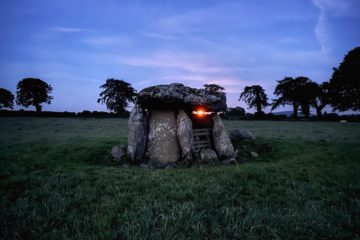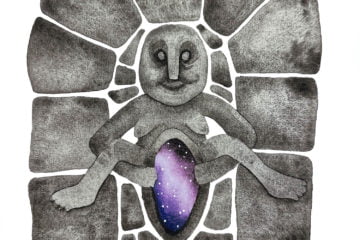
If there is one experience that I implore anyone who is exploring Ireland to have at least once, it is to stand at the Lia Fáil on the Hill of Tara and take in the incredible view, as the winds blowing up from the lands below wash over your face.
This exalted place, this mythical seat of ancient royalty, has captured our collective imagination for centuries. From the stone itself to the setting in which it now resides, the tales surrounding the Lia Fáil are as rich and colourful as you would expect from this land of storytellers and song.
But what is the Lia Fáil and is this stone really the same one from legend?
The Stone of Destiny
The Lia Fáil, also known as the Stone of Destiny, stands proudly atop the round enclosure known as An Forradh (The Royal Seat) at the Hill of Tara. It is thought to have been the coronation stone for the pre-Christian Kings of Ireland, and legend says that if the rightful King stands on it that it will let out a roar of joy.
In the Lebor Gabála Érenn, known as the Book of Invasions in English, the Lia Fáil was one of the four legendary treasures brought to Ireland by the Tuatha Dé Danann. The other three treasures are the Claíomh Solais (Sword of Light), the Sleá Bua (Spear of Lugh) and the Coire Dagdae (The Dagda’s Cauldron).
Is this the Original Stone?
There are some conflicting theories about whether the stone mounted at An Forradh is the original coronation stone. We do know however that the stone was moved in the 19th century to its current location. It’s previous location is said to have been just north of the Mound of the Hostages, according to Medieval sources.
Whether we will ever know for certain if the stone is the original is unlikely, but regardless of its origin it is undeniable that stone we can visit today holds a special power. On a clear day, it is said that half the counties in Ireland are visible from its vantage, and the collection of archaeological sites at the Hill of Tara span back as far as 3,200 BC, making it a place that has enthralled and captivated us for millennia.



